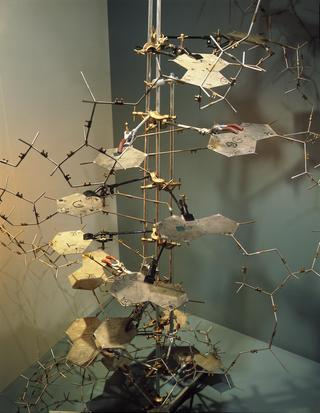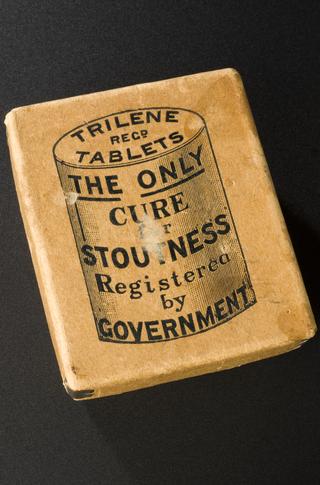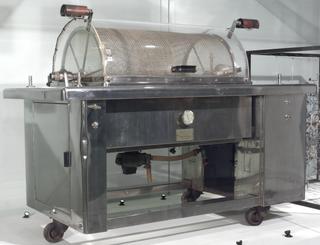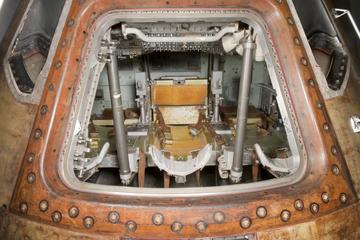
Hypodermic syringe with glass phials of drugs
- Made:
- 1885-1910 in United States

Hypodermic syringe, glass and nickel plated brass, in aluminium case with velvet purse, containing 6 glass phials of hypodermic tablets. 84 mm x 43 mm x 20 mm, .08kg. Phials: 76 mm x 5 mm diameter each. Phials of strychnine nitrate, atropine sulphate, cocaine hydrochloride, apomorphine hydrochloride, morphine and atropine sulphate and morphine sulphate hypodermic tablets. Made by Parke, Davis and Co., USA, 1885-1910, once the property of F. Treves, FRCS.
The hypodermic syringe set once belonged to Sir Frederick Treves (1853-1923), a surgeon who specialised in abdominal surgery and who supported a then-new operation to treat appendicitis, which is still used today. Treves is perhaps best known as the physician who treated Joseph Merrick (1862-90), the so-called ‘Elephant Man’.
Hypodermic syringes were and are used to deliver medical treatments under the skin. The aluminium case contains two needles and a range of anaesthetics in tablet form that would be crushed and diluted before being injected. The syringe and drugs were made by Parke, Davis and Co.
Details
- Category:
- Therapeutics
- Collection:
- Sir Henry Wellcome's Museum Collection
- Object Number:
- A620221
- Materials:
- glass, brass (nickel plated), aluminium, velvet, strychnine, atropine, apomorphine, morphine sulphate and complete
- Measurements:
-
overall: 84 mm x 43 mm x 20 mm, .08kg
phial: 76 mm 5 mm,
- type:
- hypodermic syringe, morphine and cocaine
- credit:
- Wellcome Trust




